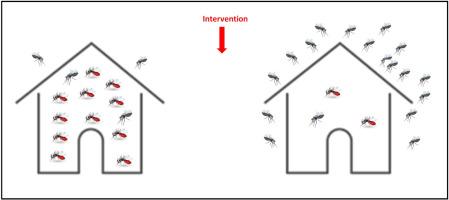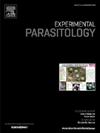A low-cost house eave screening technique complements insecticide-treated nets in reducing indoor human exposure to the bites of anopheles mosquitoes in a malaria endemic area of south forested Cameroon: results from a pilot study
IF 1.6
4区 医学
Q3 PARASITOLOGY
引用次数: 0
Abstract
Currents insecticide-based vector control strategies are struggling to reduce malaria transmission. This pilot study investigated the potential of a low-cost eave screening technique to reduce human exposure to malaria vectors in a forested area of Cameroon. The pre-intervention phase consisted of collecting baseline data on malaria epidemiology including the human malaria prevalence, vector biology and the bio-efficacy of insecticide-treated nets (ITNs). During the intervention phase, selected houses were improved by screening open eaves with wire insect mesh stapled to wood lathe strips that were attached to the exterior walls. Neighbouring unscreened houses were used as the control. In the post-intervention phase, entomological parameters of malaria transmission were assessed again and compared between improved and unimproved houses. In addition, the cost, community perceptions and the durability of the intervention were evaluated. Prior to the intervention, the prevalence of malaria in human was 38.85 %, while the entomological inoculation rate (EIR) was 73 infected bites per person per year (ib/p/y). Anopheles gambiae s.l. was the major local vector and was full susceptible to pirimiphos-methyl but resistant to bendiocarb and pyrethroids insecticides. The possession and use ITNs were 89.62 % and 79 %, respectively. Only the pyrethroid + PBO ITNs were effective against the local An. gambiae s.l. population. The intervention led to a 5.5-fold reduction in the EIR in improved houses (from 37.70 to 6.90 ib/p/y), was cost-effective ($23.6 spent per modified house) and was highly appreciated by community beneficiaries since it improved their wellbeing. This pilot study employed a low-cost house improvement technique that can be integrated with other vector control strategies in malaria endemic areas.

一项试点研究的结果:在喀麦隆南部森林疟疾流行地区,一种低成本的房屋屋檐筛选技术与经杀虫剂处理的蚊帐相辅相成,减少了室内人类对按蚊叮咬的暴露
目前基于杀虫剂的病媒控制战略正在努力减少疟疾传播。这项试点研究调查了一种低成本屋檐筛选技术在喀麦隆森林地区减少人类接触疟疾媒介的潜力。干预前阶段包括收集疟疾流行病学基线数据,包括人类疟疾流行率、媒介生物学和驱虫蚊帐的生物功效。在干预阶段,选定的房屋通过将金属丝网昆虫网固定在附着在外墙的木车床条上来筛选开放的屋檐,从而得到改善。邻近的未屏蔽房屋被用作对照。在干预后阶段,再次评估疟疾传播的昆虫学参数,并比较改进和未改进房屋之间的差异。此外,还评估了干预的成本、社区观念和持久性。干预前,人类疟疾流行率为38.85%,昆虫接种率(EIR)为每人每年73次感染叮咬(ib/p/y)。冈比亚按蚊(Anopheles gambiae s.l.)是当地主要病媒,对吡虫磷完全敏感,但对苯虫威和拟除虫菊酯杀虫剂有抗性。持有和使用itn的比例分别为89.62%和79%。只有拟除虫菊酯+ PBO杀虫剂对局部安虫有效。冈比亚s.l.种群。干预措施使改善后房屋的经济效益降低了5.5倍(从37.70磅/磅/年降至6.90磅/磅/年),具有成本效益(每套改造后房屋花费23.6美元),并受到社区受益者的高度赞赏,因为它改善了他们的福祉。这项试点研究采用了一种低成本房屋改善技术,可与疟疾流行地区的其他病媒控制战略相结合。
本文章由计算机程序翻译,如有差异,请以英文原文为准。
求助全文
约1分钟内获得全文
求助全文
来源期刊

Experimental parasitology
医学-寄生虫学
CiteScore
3.10
自引率
4.80%
发文量
160
审稿时长
3 months
期刊介绍:
Experimental Parasitology emphasizes modern approaches to parasitology, including molecular biology and immunology. The journal features original research papers on the physiological, metabolic, immunologic, biochemical, nutritional, and chemotherapeutic aspects of parasites and host-parasite relationships.
 求助内容:
求助内容: 应助结果提醒方式:
应助结果提醒方式:


